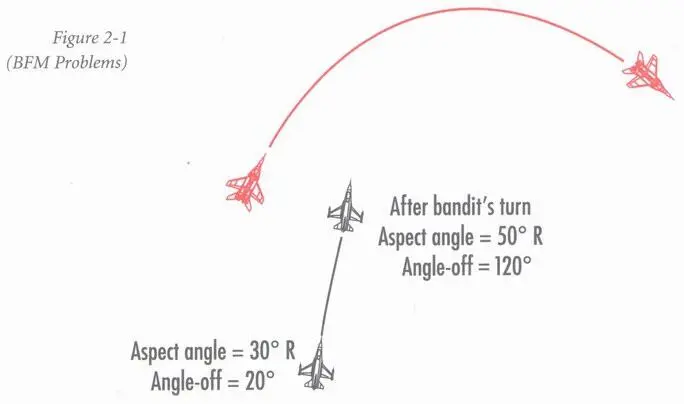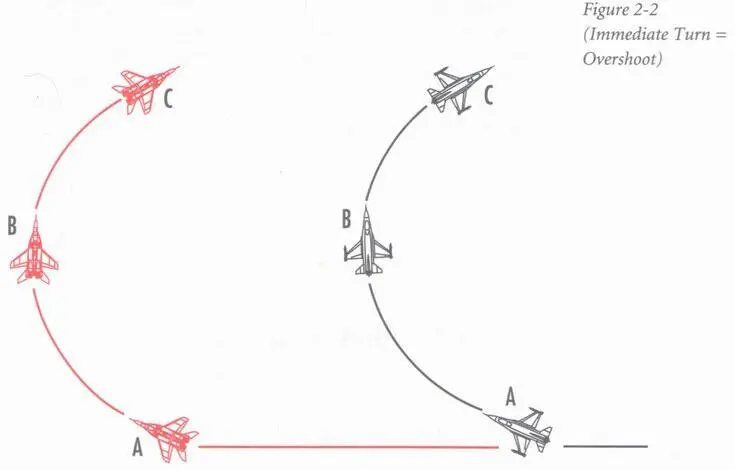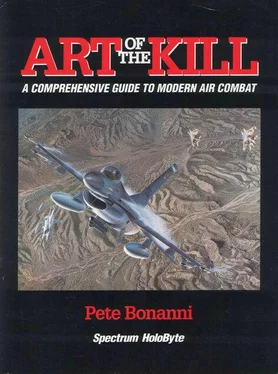Pete Bonanni - The Art of the Kill
Здесь есть возможность читать онлайн «Pete Bonanni - The Art of the Kill» весь текст электронной книги совершенно бесплатно (целиком полную версию без сокращений). В некоторых случаях можно слушать аудио, скачать через торрент в формате fb2 и присутствует краткое содержание. Город: Alameda, CA, Год выпуска: 1993, Издательство: Spectrum HoloByte, Жанр: Прочая справочная литература, на английском языке. Описание произведения, (предисловие) а так же отзывы посетителей доступны на портале библиотеки ЛибКат.
- Название:The Art of the Kill
- Автор:
- Издательство:Spectrum HoloByte
- Жанр:
- Год:1993
- Город:Alameda, CA
- ISBN:нет данных
- Рейтинг книги:4 / 5. Голосов: 1
-
Избранное:Добавить в избранное
- Отзывы:
-
Ваша оценка:
- 80
- 1
- 2
- 3
- 4
- 5
The Art of the Kill: краткое содержание, описание и аннотация
Предлагаем к чтению аннотацию, описание, краткое содержание или предисловие (зависит от того, что написал сам автор книги «The Art of the Kill»). Если вы не нашли необходимую информацию о книге — напишите в комментариях, мы постараемся отыскать её.
Video lessons: http://youtu.be/OCFMX5z-ed4
[C
tables. Best viewed with CoolReader.]
The Art of the Kill — читать онлайн бесплатно полную книгу (весь текст) целиком
Ниже представлен текст книги, разбитый по страницам. Система сохранения места последней прочитанной страницы, позволяет с удобством читать онлайн бесплатно книгу «The Art of the Kill», без необходимости каждый раз заново искать на чём Вы остановились. Поставьте закладку, и сможете в любой момент перейти на страницу, на которой закончили чтение.
Интервал:
Закладка:
I really didn’t know what the heck he was doing during that guns defense until Poster Child described it later in the debrief. It turned out that the maneuver he executed was called the “snake defense.” In Chapter 3, we’ll discuss how to use this move to keep from getting gunned. In order for it to work, a guy must try to follow you through it. I didn’t follow him in this fight. When I saw the move unfold, I pulled away. The maneuver turned out to a good counter to a snake guns defense.
Well, the fun didn’t end there. The next setup was from 9,000 feet. On a 9,000 foot perch, you’re well outside the bandit’s turn circle, so you have to know (and execute) more BFM to get into a guns position. This fight started well as I drove into the turn circle and initiated my first turn. As I kept pulling toward Poster Child at about 7 Gs, however, things started to go bad. I kept pulling into Poster Child as he executed a “continuous turn” defense with his lift vector right on me. My turn rate, of course, was better than his at this point because he had turned for a longer period of time and had bled off more airspeed. His turn radius, however, was tighter (also due to his lower airspeed). As the fight continued, I used my superior turn rate to pull my nose toward his jet. But as I pulled his jet into the HUD, something didn’t look right.
“What the heck is wrong?”
The range between the jets closed, and the pace of the fight quickened. Poster Child was in the HUD, but the line-of-sight rate was too great. Things were happening fast when suddenly a “helmet fire” broke out in my cockpit. A helmet fire — also known as a “cranium meltdown" — causes a fighter pilot’s brain to experience a kind of rapid reverse evolution. In this state, you try to attack and kill whatever is in your field of view at the time, regardless of the consequences. Luckily, Poster Child was still out in front me, so in a blur of rapid events that didn’t “feel” right, I went for guns. I missed and then grossly overshot to the outside of the turn. Poster Child immediately reversed his turn, and there I was, helmet on fire in a flat scissors. After a few slow turns in the scissors, it was clear that neither side was going to get the advantage, so Poster Child called “knock it off” and ended the fight. After this fight, we had both reached bingo, so we rejoined for a battle damage check and then headed back to MacDill.
The only real trouble I had during BFM-1 was with the 9,000 foot setup. After drawing it out on the grease board back in the squadron room, I understood why. You cannot stay in a constant high-G turn against a continuously turning bandit when starting from 9,000 feet. If you do, you’ll end up with a very high-angle gun shot at endgame. At some point in the fight, you must ease off the G, drive back farther into lag, and get closer to the bandit before going to lead pursuit. Chapter 2, “Offensive BFM,” will reveal several such important air combat tenets. You’ll learn not just what to do (like easing off the G after your initial turn on a 9,000-foot perch), but why these techniques work.
Introduction to Offensive BFM
The ultimate goal of offensive BFM is to kill the bandit in the minimum amount of time. In order to accomplish this goal, the fighter pilot must understand basic offensive maneuvering. It is helpful to think of offensive BFM as a series of fluid rolls, turns and accelerations. Some of the maneuvers in offensive BFM have names, but the modern day fighter pilot thinks in terms of driving his jet into the control position from an offensive setup, rather than in terms of executing a series of named “moves” to counter the bandit’s defensive maneuvering. The sustained maneuverability of a modern fighter has made a “move-counter-move” discussion of offensive BFM obsolete. This study guide reflects current offensive BFM thinking.
It may seem obvious, but the primary reason that you need offensive BFM techniques is to counter a bandit’s turn. When you are behind a bandit who is flying straight and level, it is a simple matter to control your airspeed with the throttle and fly around behind him. When the bandit turns, however, things change dramatically. A turning bandit will immediately create BFM problems as shown in Figure 2-1.

In order to stay in weapons parameters and in control of the bandit, you must stay at his 6 o’clock. To do this, you must maintain control of angle-off, range and aspect angle. Remember from Chapter 1 that these terms defined the angular relationship between two aircraft. Figure 2-1 shows how a bandit’s turn will change the angular relationship between the offensive and defensive fighter. To control the “angles” and stay at 6 o’clock, the offensive fighter must also turn his jet. Figure 2-2 shows why an immediate turn by the offensive fighter will not work. If the offensive fighter goes into a turn to match the defensive fighter, he will just end up out in front because the center of their turn circles are offset.

An immediate turn will not work, and driving straight will not work. A turn of some sort is the solution to solving the BFM problems of angle-off, aspect angle and range caused by the bandit’s defensive turn. The problem is twofold — how to turn and when to turn. Let’s look first at the mechanics of turns.
BFM and Turns
BFM has a lot to do with turns. It is important to understand several concepts about turns in order to be successful at BFM. These include the concepts of positional energy, turn radius, turn rate, corner velocity and vertical turns.
Power for Position
“P S(specific power) for position” is a concept that is an integral part of BFM. Fighters have two types of energy: kinetic and potential. Kinetic energy is simply the velocity or speed at which the jet is traveling. Potential energy is “stored” energy that can be converted to kinetic energy. Potential energy is directly related to aircraft altitude. If a jet is at high altitude, its potential energy is high. If the same jet is flying at low altitude, its potential energy is low. Always remember that you can trade altitude (potential energy) for speed. Likewise, you can convert aircraft speed back into altitude or potential energy.
You can also exchange energy for nose position. Anytime you maneuver or turn a fighter, it “costs” energy. When you turn a jet at high G, you “spend” or lose energy. That’s the bad news. The good news is that the defensive fighter also gives up energy to turn and defend himself.
Turn Radius and Turn Rate
The first two characteristics of turns are turn radius and turn rate. Turn radius is simply a measure of how tight your jet is turning. If you are looking down on the aircraft as it turns, the turn radius is the distance from the center of your turn circle to the aircraft, measured in feet. [15] The math involved to calculate turn radius is: TR (turn radius) = V 2 /gG V is the aircraft’s velocity in feet per second. Little g is gravity, and big G is the G the aircraft is pulling.
It is not important that you understand how to compute turn radius. Just realize that velocity is squared in the turn radius equation, meaning that turn radius will grow exponentially based on velocity. The equation also includes aircraft Gs. The more Gs that you pull, the tighter the turn. Still, velocity is squared, so airspeed has a greater effect on turn radius than G.
Читать дальшеИнтервал:
Закладка:
Похожие книги на «The Art of the Kill»
Представляем Вашему вниманию похожие книги на «The Art of the Kill» списком для выбора. Мы отобрали схожую по названию и смыслу литературу в надежде предоставить читателям больше вариантов отыскать новые, интересные, ещё непрочитанные произведения.
Обсуждение, отзывы о книге «The Art of the Kill» и просто собственные мнения читателей. Оставьте ваши комментарии, напишите, что Вы думаете о произведении, его смысле или главных героях. Укажите что конкретно понравилось, а что нет, и почему Вы так считаете.












